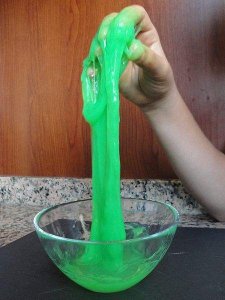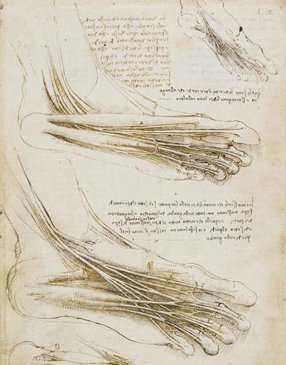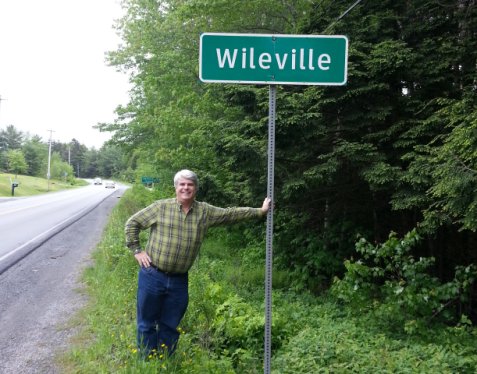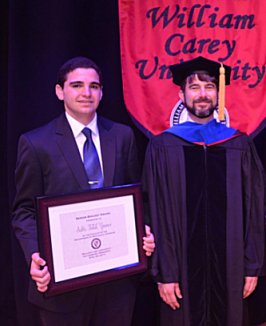
and giving them your E-MAIL address. Don’t worry – they won’t sell your address to anyone.
If you get the eBook, I strongly recommend you read the article entitled “Of Cormorants, Cats, and Kids” by Diana Waring. It is excellent.
Thoughts from a scientist who is a Christian (not a Christian Scientist)

and giving them your E-MAIL address. Don’t worry – they won’t sell your address to anyone.
If you get the eBook, I strongly recommend you read the article entitled “Of Cormorants, Cats, and Kids” by Diana Waring. It is excellent.

Of course, most textbooks need to be updated from time to time, especially to keep up with advances in the field. For example, when our book was published, scientists weren’t sure what the human appendix did. Many considered it a vestigial organ, but creationists and intelligent design advocates did not. As a result, the best we could write at the time was that the function of the human appendix was unknown. Several years after the book was published, however, scientists determined the function of the appendix (see here, here, and here). Even some evolutionists now agree that the appendix provides such a vital function that it is not vestigial in any way. In fact, one group says it is so important in some mammals that it evolved independently at least 32 separate times over the course of earth’s history!
It is not surprising, then, that the publisher of our book decided it was time for a new edition. However, since I am no longer a part of that company, I was not involved in its production. As people began to understand this, some asked me what I thought the new edition would be like. I told them that the co-author of the first edition (Marilyn Shannon) was involved in the project, so I expected the second edition of the book to be very good. She is incredibly knowledgeable in the field (she teaches it at the college level), and she is a strong Christian who has a good understanding of how faith and science interact. I didn’t know who else was working on the project, but I suspected that as long as she was the guiding force, it would turn out well.
I was recently able to review the book, and I was pleased to see that my expectations were correct. The second edition is an excellent course on human anatomy and physiology that will prepare students well for advanced study at the university level. It is “user friendly” enough to be used independently by home-educated students and is rigorous enough to prepare students who have already taken Exploring Creation with Biology for the Advanced Placement Test in biology.
Continue reading “The Human Body: Fearfully and Wonderfully Made, Second Edition”

My Canadian tour came to a close in Nova Scotia, which actually has a place in my family’s history. My father’s ancestors came from Germany and settled there, forming a small town called “Wileville.” As you can see, I got a chance to visit there. It’s still a small town, and there wasn’t much there except for a market/bakery and a gas station. Nevertheless, it was cool to see that nearly every street was named after a Wile, and there was even a lake called “Wile’s Lake.”
Of course, the main reason I was in Nova Scotia was to speak at the HEMS Homeschool Convention. It was another intimate convention that was held at an excellent facility and run by a group of incredibly dedicated home educators. One of the things I loved about the convention was that in addition to a vendor hall (where curriculum providers sold curriculum to those who needed it), there was also a “young entrepreneurs” section where young people could sell things that they had made. There was a wide variety of things to buy, from candy to plants. I ended up buying some cards from a very talented young photographer who started a photography business called Gracious Vignettes.
I gave a total of six talks at the convention, five of which were on Saturday. That’s actually a lot of talking, and I even told the conference attendees that I expected to be bored with myself after giving so many talks. They were very gracious, however, thanking me over and over again for coming to their “little” convention. This seemed to be a theme at both of the conventions I spoke at in Canada. The organizers and even the attendees seemed to be constantly apologizing for how small their conventions were. They had heard of the mega-conventions in the U.S. and were sorry that their numbers couldn’t measure up.
I hope I was able to dispel them of this notion. I think that big conventions and small conventions both have a role to play in home education. Big conventions can bring in lots of great speakers, and their vendor halls are simply brimming with choices when it comes to educational material. However, they can’t be flexible. I remember when I spoke at the FPEA convention in May, Diana Waring and I had a great question from the audience, but before we were able to answer it, the hostess cut us off, because the convention had to stay on schedule. I completely understand why the hostess needed to do that, and it is a consequence of the convention being very large. In addition, I can’t spend a lot of time speaking with a single individual at a big convention. In both of my Canadian conventions, however, I had long discussions with several homeschoolers who needed a lot of advice, and I was never cut off in any of my talks. That’s the beauty of a small convention.

This past weekend, I spoke at the Home Educators of New Brunswick convention in Sussex, New Brunswick (Canada). It was an intimate, well-organized conference with many wonderful people. I spoke a total of five times, once on Friday night and four times on Saturday. Even though they are in another country, Canadians face many of the same problems with their education system that we in the U.S. face with ours. In fact, three of the talks I gave at this convention were “Canadian versions” of the talks I give here at home. They cover the same issues, but they use Canadian statistics rather than U.S. statistics. Nevertheless, the conclusions are very similar.
For example, one of my favorite talks is the one I give about homeschool graduates and what they are doing now. This link is the handout for the U.S. version of the talk, while this link is the one for the Canadian version. Even though the Canadian version contains only Canadian statistics and mostly the stories of individual Canadian homeschool graduates (with a few from the U.S. and New Zealand thrown in for good measure), you can see that the conclusions are really the same: Homeschool graduates are doing wonderfully well and are really making a difference in the world.
Of course, one of the great things about speaking at a convention in another country is that it gives you a chance to do a bit of sightseeing as well. My wife traveled up to New Brunswick after the conference was over, so she and I are traveling around enjoying the lovely countryside. The picture at the top of this post, for example, was taken at Hopewell Cape in the Bay of Fundy. I will write more about that in my next blog post.
As always, I was asked several wonderful questions after my talks and while I was in the exhibit hall.

Last Friday and Saturday, I spoke at the Florida Parent-Educators Association (FPEA) convention in Orlando, Florida. It is one of the largest homeschooling conventions in the United States, and it is held at an incredible venue (the Gaylord Palms Resort). The convention was made doubly-special for me because I went early and was able to do a unique scuba dive: I got to dive in the Epcot Center’s “Living Seas” aquarium. You can see pictures of it on my Facebook page.
I gave six talks at the convention, including two with Diana Waring. The picture at the top of this post was taken during our first talk, “Homeschooling: The Environment for Genius,” which is based on a study of the childhoods of several geniuses. The picture at the top of the post comes from the question/answer session of that talk. In fact, one of the more interesting questions of the convention came during that time.
A homeschooling mother stood up and asked the following: Because geniuses tend to think outside the box, they are often noticeably different from their peers, and that can produce all sorts of negative consequences. If we do have children who are geniuses, how do we deal with those consequences? Unfortunately, our time had expired by then, and a conference official cut us off before we could answer that question. However, I went down to her, and a crowd gathered around us to hear the answer, which you will find below.
This past weekend, I spoke at the Sioux Empire Christian Home Educators (SECHE) convention. It was a small convention, but it was well-organized and full of enthusiasm. While I can understand the draw that large conventions have (lots of speakers, all manner of curriculum and resources in the vendor hall, etc.), there are a lot of advantages to small conventions as well. I got to spend a lot of time with each individual who wanted to speak with me personally, and there was plenty of time in each session for everyone to have their questions answered. The “personal touch” that is available at smaller conventions simply can’t be experienced at the larger ones.
I gave a total of five talks at the convention, including Homeschooling: Discovering How and Why It Works. In that talk, I give lots of statistics regarding students who are educated at home. For example, I discuss the Rudner study, which found that at every grade level, the average homeschooled student scored better on standardized tests than the average privately-schooled student, who in turn scored better than the average publicly-schooled student. It also shows that the average publicly-schooled student lags farther and farther behind the the older he or she gets. From an academic standpoint, then, it is more important to avoid public school in the junior high and high school years than it is in the elementary years.
In addition, I show Rudner’s comparison between students who are homeschooled every year of their K-12 education and those who are homeschooled for only some of those years. While there is no difference (on average) between the two groups in the elementary years, by the time the students are in junior high and high school, those who did not stay in homeschool lag behind those who are homeschooled every year. To me, this indicates that homeschoolers make the most academic gains in the junior high and high school years. I like the Rudner study, because the author was initially a skeptic of home education, thinking that home educators were a bunch of “conservative nuts.”
After I discuss the data related to homeschooled students, I switch to the data related to homeschool graduates. I show several studies that clearly demonstrate that homeschool graduates excel at the university level compared to their publicly- and privately-schooled peers (see here, here, and here, for example). This led to a very interesting question from an audience member.
Continue reading “The Sioux Empire Christian Home Educators Convention”

Well, I recently heard from a justifiably proud parent regarding her homeschool graduate’s success. His name is Talal Younes, and the picture above shows him with one of his professors at William Carey University. The picture was taken at the Honors Day Convocation held by the university, and it shows him with the Senior Biology Award he received. This means that he was the outstanding senior biology student over the entire year. Of course, one award wasn’t enough for Talal, so he also received the Senior Chemistry Award at the same event!
As if that’s not enough, Talal’s mother was kind enough to share with me the title of his Senior Honors Thesis: “Proposal of a Novel Mechanism for Alpha-synuclein Induced Neurodegeneration in Parkinson’s Disease.” In order to receive graduation honors at William Carey University, a student must complete an honors thesis in his or her area of study. However, a student can’t just decide to do an honors thesis on his or her own. The student must be invited to do so by a faculty member who wishes to supervise the thesis. Thus, the very fact that Talal can do a Senior Honors Thesis tells you he was so impressive that a professor wanted to spend extra time and energy working with him!
I spent this past weekend speaking at the 2013 Midwest Homeschool Convention in Cincinnati, Ohio. The crowds were huge, and there was a lot of enthusiasm amongst both the attendees and the speakers. It seems to me that this convention was much like the conventions I remember from ten years ago: lots of enthusiastic homeschoolers listening and talking to lots of enthusiastic speakers about the joys, troubles, and triumphs of home education. It was wonderful.
I spoke a total of seven times on six different subjects. Two of my talks were given with Diana Waring, and I enjoyed them the most. She and I have different styles that seem to complement each other really well. As she puts it, I provide the “analytics,” and she provides the “warm fuzzies.” I am not sure that’s exactly right, but it’s probably close. We gave the same talks in Greenville, SC, and we will be doing them again in Springfield, Missouri and Kissimmee, Florida.
As is typically the case, the most interesting part of the conference for me was interacting with the attendees. I had a rather constant stream of parents and students coming to my booth to talk with me. Many of them asked questions, and I hope my answers provided some help. Others came by just to report on how they (or their children) were doing with my courses. I was really impressed to meet one young lady who had completed all of my textbooks! I have authored or co-authored eight texts, and most students get through five of them. Some complete six, and a very few manage to cover seven, but this young lady had gotten through all eight of them. As a result, she has already taken the equivalent of a year of university-level biology, a year of university-level chemistry, and a year of university-level physics. That’s pretty impressive!
I take questions from the audience in all of my talks, and at the end of one of my evolution-related talks, a man asked a question about abiotic oil. He had read a book by Dr. Thomas Gold entitled The Deep Hot Biosphere, which tries to make the case that both oil and coal are not fossil fuels. In other words, they are not produced by decaying dead things. Instead, they are produced by chemical processes in the earth and simply reworked by living organisms. I read that book many years ago, and while it is definitely worth reading (even today), I personally think that it really overstates the case.
Continue reading “The 2013 Midwest Homeschool Convention (and abiotic oil)”

Last week, I spoke at the Great Homeschool Convention in Greenville, South Carolina. It was very well attended, and other than a fire alarm that interrupted one of my talks, it ran really smoothly. I gave two brand-new talks at this convention, and they were both done with Diana Waring, whose high school history curriculum is truly wonderful.
One of these new talks was on the myths that you find in textbooks. It started off with the myth that ancient people thought the earth was flat. There is simply no truth to such an absurd idea. As early as 200 BC, natural philosophers knew the circumference of the earth, and the earliest Christian writers who mention the shape of the earth (such as Basil of Caesarea – c. 330-379) mention the spherical shape of the earth as an accepted fact. No one thought that Columbus was going to sail off the edge of the earth. His problems getting funding involved people not thinking he could carry enough supplies to make a voyage all the way around the earth. The other talk was based on a study by Dr. Harold McCurdy, which I have already discussed here.
While the talks I gave were enjoyable, as usual, the most interesting thing that happened occurred as a result of someone asking me a question. One of the solo talks I gave was called Why Homeschool Through High School. As a part of that talk, I discuss studies in which homeschool graduates are compared to graduates of traditional schools when it comes to their performance in college. Not surprisingly, the homeschooled students do much better in college than their traditionally-schooled peers.
After the talk, a homeschooling parent who is also a college professor asked me a very interesting question. He asked me if any study had attempted to measure not the performance of homeschool graduates at the college level, but instead the preparation that homeschool graduates have when they arrive at college. After all, he said, a student can perform well at the college level even when he is unprepared, as long as he has the ability to learn on his own. I told him that the studies I had seen focused on performance, but I would take another look at the literature and see what I could find.
Well, it turns out that such a study has been done. It is a PhD dissertation, which is why I hadn’t seen it in the academic literature. It was done by a student at the University of Nebraska, Lincoln, and it at least partially addresses the question that the homeschooling parent asked.
The Home Educating Family Association is a wonderful organization that provides all sorts of useful resources to homeschoolers. They publish a magazine called (not surprisingly) Home Educating Family. Recently, they asked me to contribute to their first issue of 2013, which focuses on pro-life topics. I ended up writing two pieces for them. The first one is entitled “My Little Girl,” and it discusses our experience of adopting a teenager (who just turned 34!). It was probably the most difficult piece I have ever written, as it brought up all sorts of (mostly wonderful) memories. I had such a hard time finding the words I needed to convey what I felt, and then I had a hard time proofreading the piece because of my tears! The article is not available on the internet, so if you want to read it, you will need to get the print magazine.
The other article didn’t make it into the print magazine, so it ended up being posted on the Home Educating Family Association blog. It is essentially a composite of two blog posts I wrote previously discussing how a baby in the womb is fully human. It is not emotional, but some might find it interesting. If you care to read the piece, you can find it here.